Brewster SBA/SBN Scratch Build
In 1934, the Brewster company was initiated into the Naval aircraft market when it was invited to submit a proposal to build a new dive-bomber to Navy specifications. Prior to this, the company had been doing subcontract work for Vought and Grumman, but had not been the originator of a complete design. Brewster received a contract to build a prototype mid-wing monoplane with an internal bomb bay in October of that year, and the completed XSBA-1 was delivered to the Navy for testing in April of 1936.
Early trials revealed the need for a number of modifications, and the XSBA-1 was returned to testing in 1937 with a more powerful engine, three-bladed propeller, revised cowling and a new canopy. With a new top speed of 263 mph, the XSBA was the fastest monoplane scout bomber so far tested. The Navy ordered 30 airplanes in September 1938, to be built by the Naval Aircraft Factory as the SBN-1, as Brewster was busy with the F2A-1 Buffalo fighter project by then. Unfortunately, the Naval Aircraft Factory proceeded very slowly, such that the first SBN-1s were not delivered until late 1940 (the Douglas SBD Dauntless was already in service by mid-1939), and the contract was not completed until early 1942. By this time, the design was already obsolete. SBN-1s served only briefly with VB-3 of Saratoga and later as trainers with VT-8 on the Hornet.
As a scout bomber, the aircraft carried a 500 lb payload internally, and was armed with a forward-firing .50 cal machine gun and a .30 flexible machine gun in the rear seating position. Range was 1,100 miles. At 39 ft. wingspan and 27 ft 8 in. length, the craft was even smaller than the Douglas SBD, and like the SBD had non-folding wings and dive brakes with a unique system of holes to prevent buffeting in a dive.
My first exposure to the existence of the Brewster SBA/SBN was from the book “Golden Wings 1941-1945” co-authored by our very own Jim Sullivan. That book was a big influence in my decision a few years back to build a history of Navy/Marine dive bombers in 1/48 scale, beginning with the Curtiss JNY and ending with the Douglas Skyraider. While trying to accomplish this goal, I discovered a number of aircraft in that history that had never been produced in injection-molded kit form. Some of the more obscure ones were only done in vacu-form, and a couple others were only done in paper. After completing a Great Lakes BG-1 in paper a while back, I felt I had hit the end of the road - no more kits were available, and my collection would remain incomplete. Then it occurred to me - why don't I do my own vacu-forming? With that burst of inspiration, I purchased some basswood blocks and plywood, and began researching the internet for everything I could find on the Brewster SBA.
What I found was not much - there were very few photographs of the external aircraft, and practically none of the internals. At this point I was considering writing to Jim and asking if he knew of any resources that would be helpful, and right about then was when I heard of his passing. I decided then to build the SBA in his honor, and joined the Jim Sullivan Memorial Build Group here on iModeler. You can go over there and read about my adventures in vacu-forming while I was fabricating this model. Using what little info and photographs I'd found, I proceeded to build my dive-bomber.
The vacu-form process gave me a fuselage, wings and a canopy. I used 3-view drawings, printed at 1/48 scale as templates to size the components. To these I added the engine, propeller, wheels, axels, and cockpit details from the Tamiya Buffalo kit. Everything else was scratch built from Evergreen stuff (except the tail wheel which is from the Monogram Dauntless kit). The cockpit layout and gunners position are purely made up, and I have no detail whatsoever inside the open wheel wells. The landing gear was constructed of Evergreen rod based on what I could discern from numerous photos from several angles. I cut away the dive brake portion of the vacu-form wings, and created new brakes from Evergreen sheet. I used a dremel with a drill bit to do all the small holes, and used an Xacto knife to make the diamond-shaped holes. This was accomplished by cutting square holes and then filling in small sections of straight sheet to make the 'X' in the middle. I didn't have any photos of planes on the ground with the brakes extended, but I wanted to show them off, so I opened them up 🙂
All of the photographs I saw had the planes in light gray camouflage with national insignia in 4 places, so that's how I finished mine, with Vallejo Air light gray over black Vallejo primer. Most of the photos also had no squadron markings, so I left those off mine as well. I considered opening up the cockpit canopy, but I glued it in to do the painting, and decided not to mess with it to open it back up afterwards.
What I ended up with is what I consider to be a reasonable facsimile of the Brewster SBA/SBN dive-bomber, one that I am very pleased to be able to add to my collection. Now that this project is done, I'm starting to think about perhaps doing another project for the Martin BM-1, or maybe the Curtiss F8C Helldiver…
Anyway, I hope you enjoy my Brewster SBA!
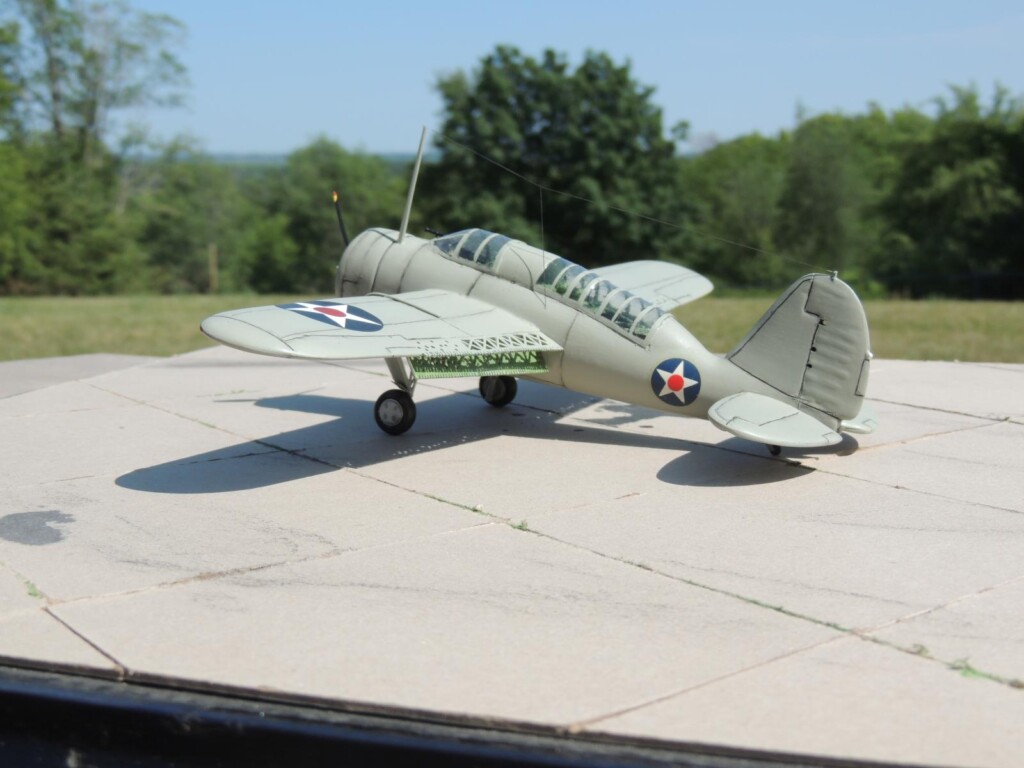
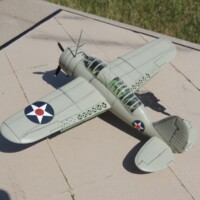
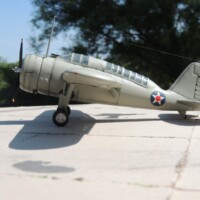
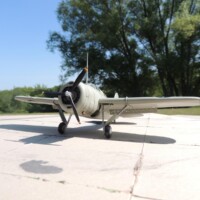
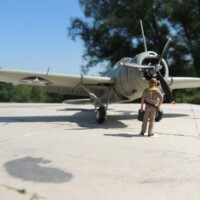
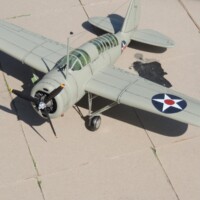
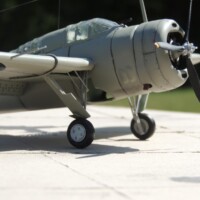
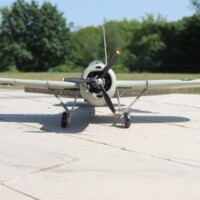
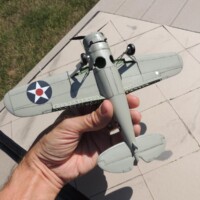
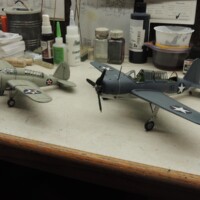
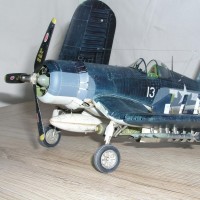
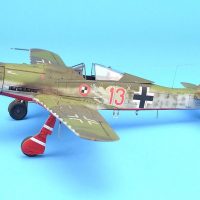
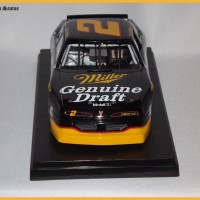
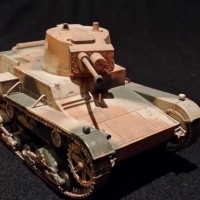
A really outstanding job, Robert! It is beyond belief that this model is scratch built. Excellent modeling skills and a very informative article, too!
Congratulations!
@fiveten Thank you for your comment, Spiros, and for the encouraging words while the project was in progress!
An excellent first result at scratchbuilding Robert.
@tcinla Thank you kindly, Tom, for your comment here as well as on the group build page.
This result clearly shows your skills, Robert @robgenev665
Your scratch build skills are amazing.
Well done.
@johnb Thank you so much John for your comments here and on the group build page!
That came out Darn nice, Robert. Well done on all!
@gwskat Thank you, Gary!
Amazing.
@kahu Thank you, David!
Absolutely outstanding result here Robert. Especially on your first attempt at vacu-forming a model. Impressive.
@tom-bebout Thanks, Tom!
Your enthusiasm for the real thing really shows through in your determination to build a model of this aircraft come what may. You must be really pleased with the outcome. It looks especially great posing in what I guess is your garden.
@chinesegeorge Thanks, George! Yes, I am quite pleased that I was able to build something that I could add to my collection, an aircraft that apparently no one else has done before now.
Mighty impressive, Robert! 👍
@garybrantley Thank you kindly, Gary!
Great job scratchbuilding! I'm not heading in that direction ever, I don't think! Looks great - interesting subject, and those dive brakes are very cool.
@gkittinger Thanks, Greg! I do find that I enjoy the vacu-form kit-building process. I wasn't sure if I was going to be able to pull off reproducing the dive brakes, but they were too distinctive to not at least attempt it. I'm quite happy with how they turned out.
Impressive scratch building project - well done!
@chasbunch Thank you, Chas!
Great work, Robert!
@j-Healy Thank you, John!
Robert Knaack (@robgenev665)
I don't think I have the skills to create something like this. I commend you BIG TIME for your scratch building work. I can't say I have ever seen another one of the type built, in any scale. It will look very good in your growing collection of WW2 Navy planes. From what I have read, they were used here in Florida during the early part of the War as trainers. They were probably a pretty rare sight, I don't think they made too many of them to begin with.
Outstanding job !
@lgardner Thanks, Jim, for the compliments. I wish I could find the memoirs of pilots who flew the SBA, and I would also like to see video of the landing gear operating - it's just a unique design, I can only guess how it actually worked. There were only 30 of them made, as you suspected. They were used for a bit by VT-8, so there ought to be some documentation somewhere of how they performed.
Brewster mania! When You itch for something bad enough, scratch it! Fabulous job. Aint gonna see this from Tamiya. That'sa good looking model of a good looking airplane, a stretch Buffalo. You are the only kid on the block to have one of those.
@billkoppos Thanks, Bill! Setting a goal, then pursuing it even if it involves gaining new skills, is quite rewarding.
Very impressive project ! It turned out great.
@ssgt Thanks for the comment, Jay!